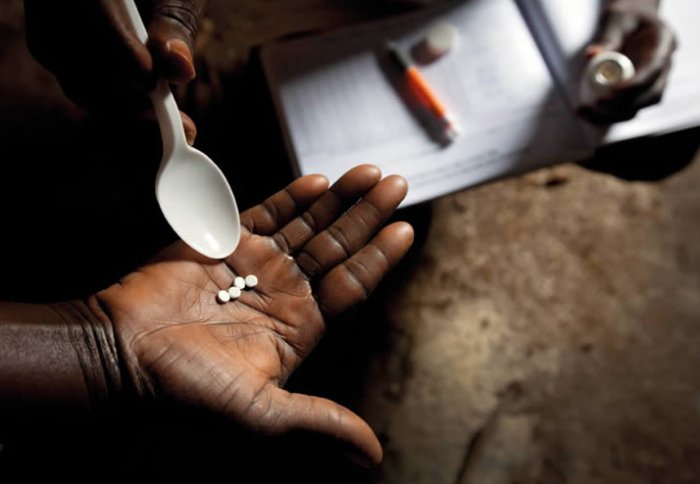Increasing river blindness treatment to twice a year doesn't double cost
by Sam Wong

Ivermectin tablets © Kate Holt/Sightsavers
Distributing treatments for river blindness twice a year instead of annually doesn't double the cost, according to a study in Ghana.
Currently, many African countries give out ivermectin treatment once a year to control the disease, which causes irreversible loss of vision and unbearable itching.
Many countries are now considering biannual treatment in a drive to eliminate river blindness, but until now little data has been available on the cost of adopting this strategy.
The London Declaration on Neglected Tropical Diseases (NTDs), a commitment made by global health organisations and pharmaceutical companies in January 2012, set a target of eliminating river blindness in selected countries in Africa by 2020. The goal was inspired and endorsed by the World Health Organization’s 2020 Roadmap on NTDs.
Researchers from Imperial College London, the Council for Scientific and Industrial Research of Ghana, and the Neglected Tropical Diseases Programme of the Ghana Health Service conducted a study to assess the cost of biannual ivermectin distribution in Ghana. They also assessed some of the factors that may hinder the scaling up of treatment frequency at a large scale.
The results, published in PLOS Neglected Tropical Diseases, show that the yearly cost of biannual ivermectin treatment is only 50 to 60 per cent higher than that of annual treatment, rather than twice as much, as other programmes have assumed. In addition, large-scale mass biannual treatment was reported as being well received by communities and health workers, and considered sustainable in the context of the Ghanaian NTD control programme.
Hugo Turner, from the School of Public Health at Imperial College London, who led the study, said: “The results of this study will help to inform decisions about whether to increase treatment frequency from annual to biannual for the control and elimination of river blindness in Africa.”
River blindness, also called onchocerciasis, is caused by parasitic worms that predominantly affect rural populations who live near fast-flowing rivers in sub-Saharan Africa.
Regular and prolonged treatment with ivermectin can contribute to both reducing the disease burden and the occurrence of new infections..
Following successful control of the disease in some west African countries, the African Programme for Onchocerciasis Control recently introduced a new policy aiming to eliminate the infection where possible in addition to its previous goal of preventing the disease caused by the parasite.
Some countries, such as Ghana and Uganda have already started distributing ivermectin twice per year in some areas. The Carter Center will oversee the implementation of biannual distribution in parts of Ethiopia where treatment has never been deployed.
“Accurate cost data are essential to inform economic evaluations and policy decisions regarding the implementation of a biannual ivermectin distribution strategy in Africa,” Mr Turner said.
Reference
Turner HC, Osei-Atweneboana MY, Walker M, Tettevi EJ, Churcher TS, et al. (2013) The Cost of Annual versus Biannual Community-Directed Treatment of Onchocerciasis with Ivermectin: Ghana as a Case Study. PLoS Negl Trop Dis 7(9): e2452. doi:10.1371/journal.pntd.0002452
Article text (excluding photos or graphics) © Imperial College London.
Photos and graphics subject to third party copyright used with permission or © Imperial College London.
Reporter
Sam Wong
School of Professional Development